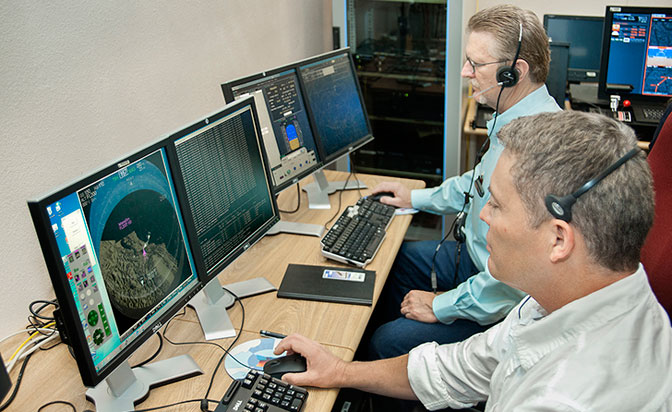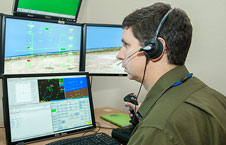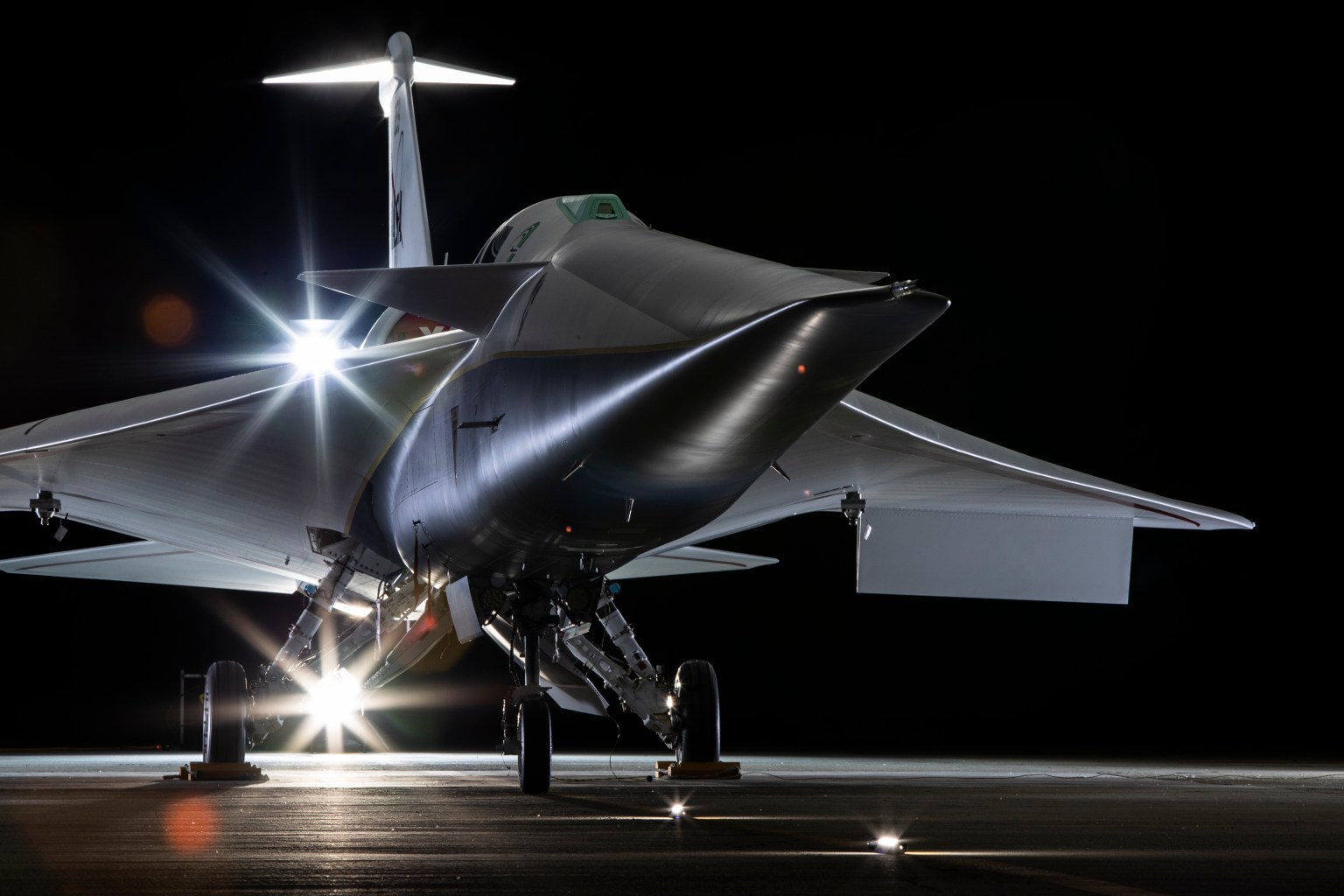NASA’s Unmanned Aircraft Systems Integration in the National Airspace System project, or UAS Integration in the NAS, is providing critical data to decision-makers who are working to meet the congressional mandate to open the national airspace to remotely or autonomously controlled aircraft by 2015.
A part of the UAS Integration in the NAS effort, led by the NASA Dryden Flight Research Center in Southern California, is a computer-generated application called the Live Virtual Constructive-Distributed Environment, or LVC-DE for short.
LVC-DE is essentially a simulation and flight test environment that allows UAS-NAS project researchers to incorporate real and simulated manned and unmanned aircraft in a virtual airspace in order to test concepts, technologies and procedures intended to facilitate flying both manned and unmanned aircraft in the same airspace.
The LVC architecture was chosen to take advantage of high-fidelity simulation, flight test capabilities, and operational experience at several NASA field centers. This distributed system provides a state-of-the-art representation of the national airspace system, allowing researchers to conduct testing safely and efficiently in a relevant environment.
“The team did an admirable job in developing the basic LVC architecture through proof-of-concept activities with Ames Research Center, beginning last spring with the early integration and flight testing with a modified MQ-9 unmanned aircraft equipped with ADS-B providing valuable data and risk reduction for us,” said Sam Kim, NASA Dryden’s LVC-DE project manager.
“The team is now completing the LVC’s basic design, and they are engaged in validation, verification and characterization testing to provide specific performance capabilities to the researchers as we prepare for its integrated test activities next spring,” Kim added.
The most visible aspect of LVC-DE at Dryden is a group of simulation computers in the center’s simulation laboratory. These systems are connected to the LVC’s central computer simulation node at NASA’s Ames Research Center at Moffett Field, Calif., which generates the virtual air traffic data. Researchers at NASA’s Glenn Research Center in Cleveland, Ohio, are also interconnected with Ames and Dryden. In the future, NASA’s Langley Research Center in Hampton, Va., and the Federal Aviation Administration’s (FAA) William J. Hughes Technical Center in Atlantic City, New Jersey, will also participate in the simulations and flight tests.
An early milestone for LVC-DE was marked this past June as the project team began a technology verification, validation, and characterization effort that is designed to give researchers and engineers a first look at the core system capabilities.
The LVC-DE subproject abbreviation can be broken down into the following:
- “L” in LVC stands for “live,” meaning real people operating real manned and unmanned aircraft that will participate in the flight testing.
- “V” in LVC stands for “virtual,” meaning real people operating high-fidelity manned and unmanned aircraft simulators.
- “C” in LVC, for “constructive,” stands for computer-generated, synthetic air traffic that supports the testing. People can make inputs through a low-fidelity pilot interface.
- “D” stands for “distributed,” as the subproject is distributed around the country, with NASA’s Ames, Dryden, and Glenn research centers (and Langley Research Center in the future) and other external partners such as the FAA, all networked together.
- “E” stands for “environment,” the overall networked setting representative of the national airspace system that is critical to the whole system.
Ground Control Stations (GCS) and high-fidelity piloted UAS simulators are one of the elements that provide the “virtual” simulation, serving as integral elements of the LVC. The LVC architecture incorporates the MQ-9 pilot simulator and the research GCS. A research GCS is being developed to provide a UAS simulation capability in addition to command and control of UAS surrogate aircraft.
Though not involved in the current LVC-DE characterization effort, NASA Dryden’s unmanned MQ-9 Predator B named “Ikhana” and a manned YO-3A Quiet Star aircraft will later support the subproject flight tests.
The Ikhana will serve as a “live” element aircraft in future LVC-DE tests, and the YO-3A will join it as another “live” element aircraft following modifications for use as a UAS surrogate aircraft during the next year or two. The YO-3A will be controlled by the research GCS when it is configured for UAS surrogate operations.
“This has been an outstanding collaborative engineering effort between Dryden and Ames,” said Jamie Willhite, lead LVC flight systems engineer at Dryden. “The LVC team has integrated the Ikhana aircraft and simulation with the core LVC architecture, allowing the aircraft and simulation to be displayed in the simulated air traffic control environment at NASA Ames during flight tests.”
Other NASA aircraft may participate in the future as well to generate real-world conflict detection and resolution scenarios.
Gray Creech, public affairs
NASA Dryden Flight Research Center






























